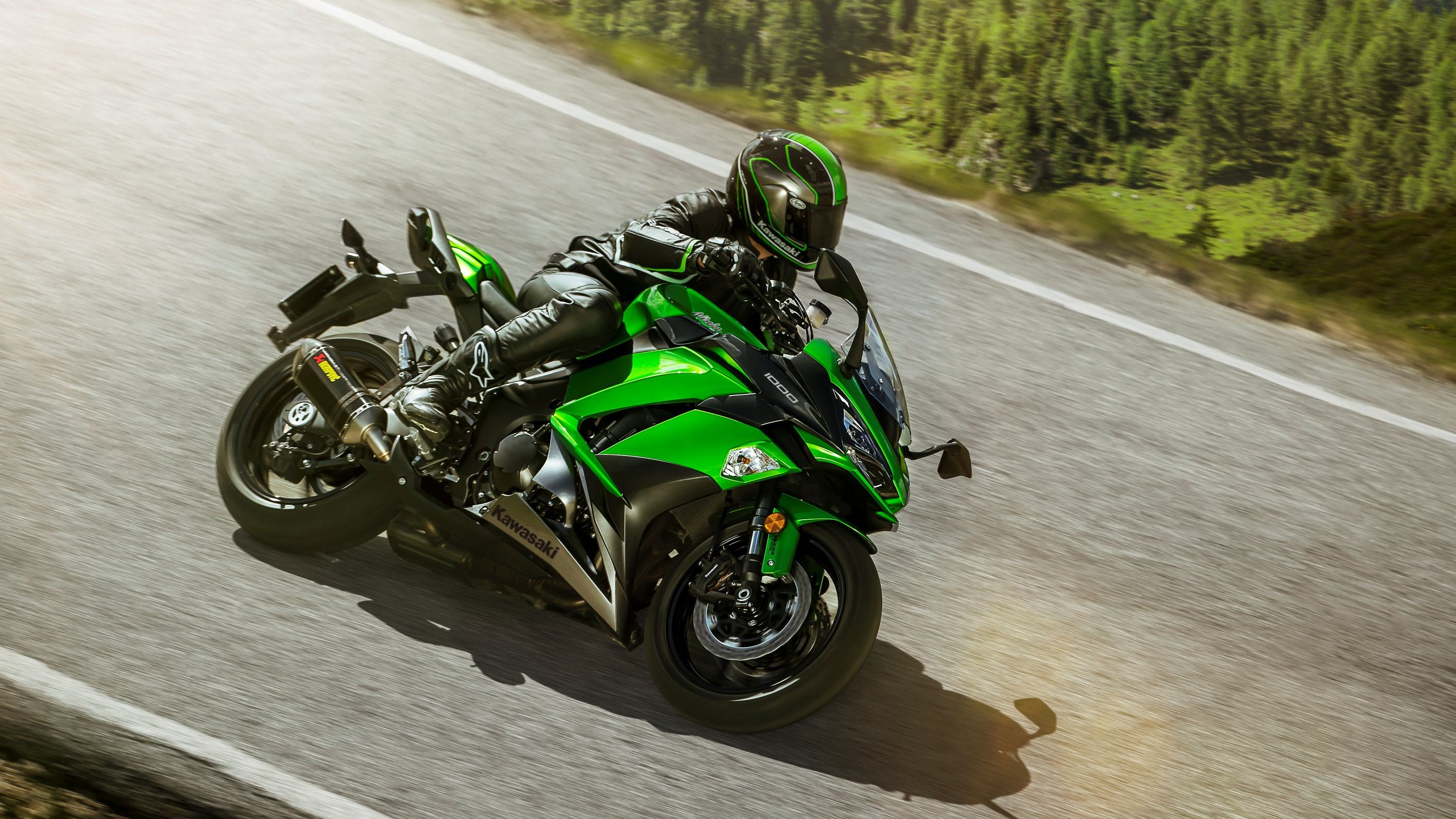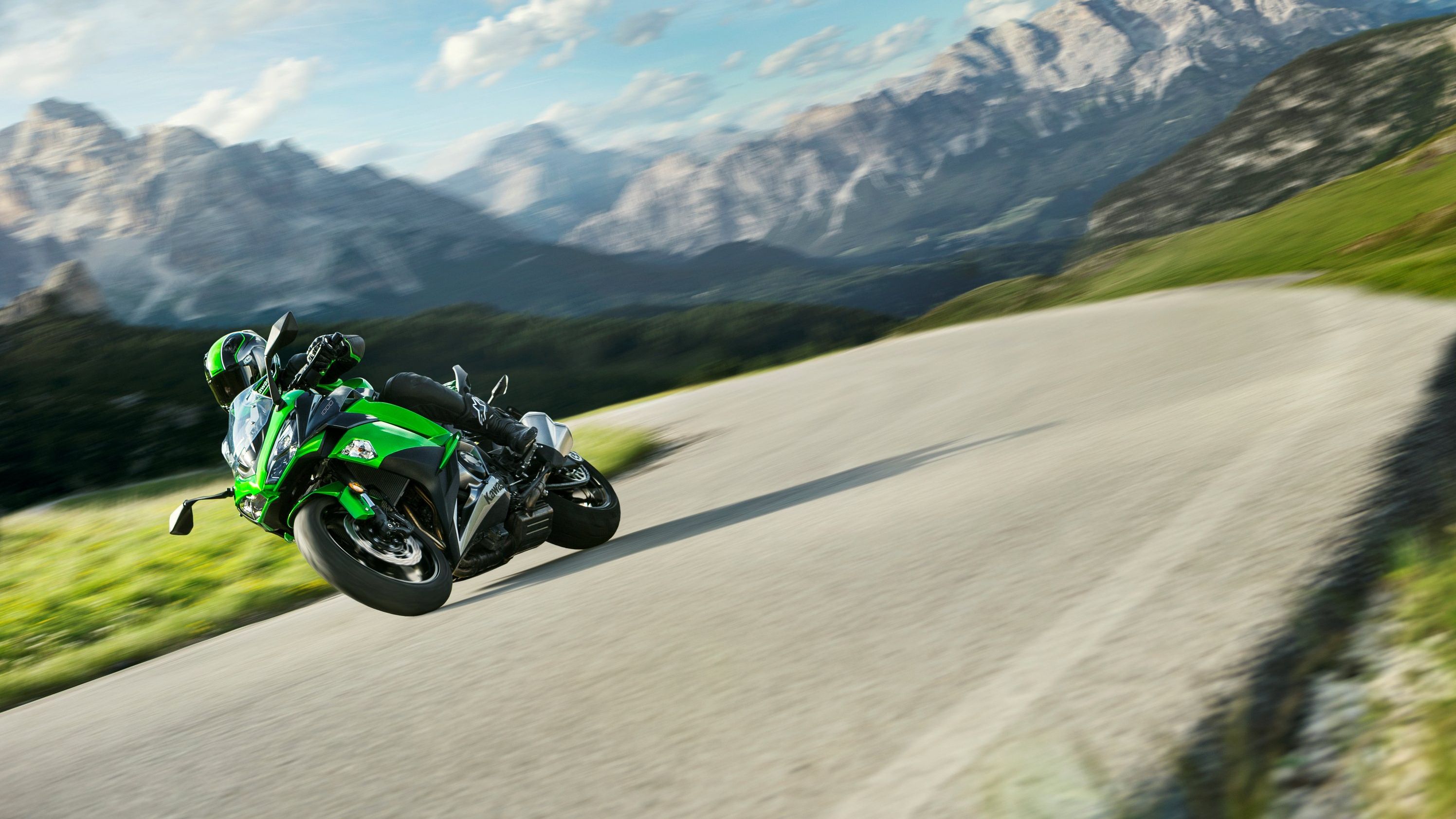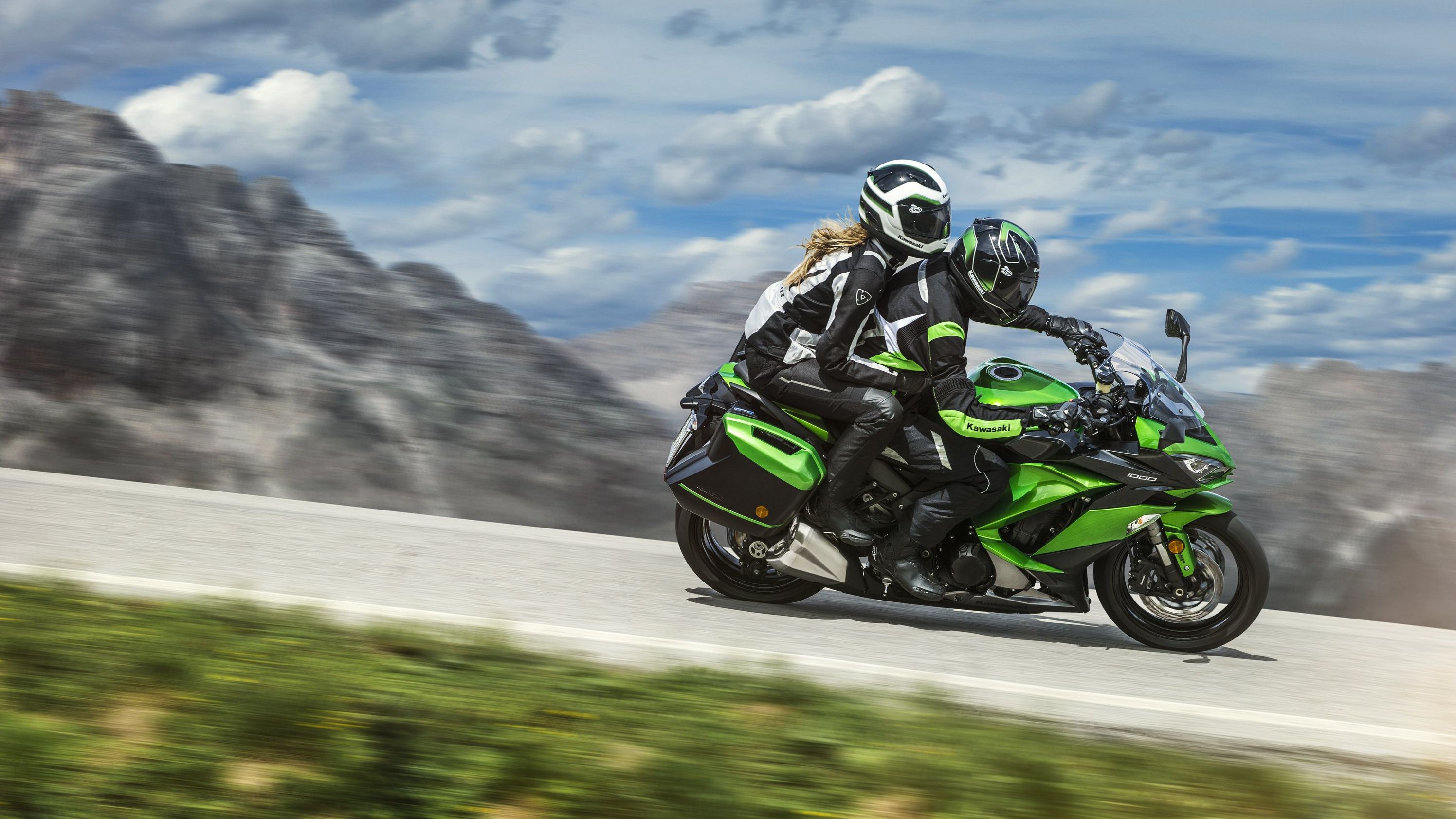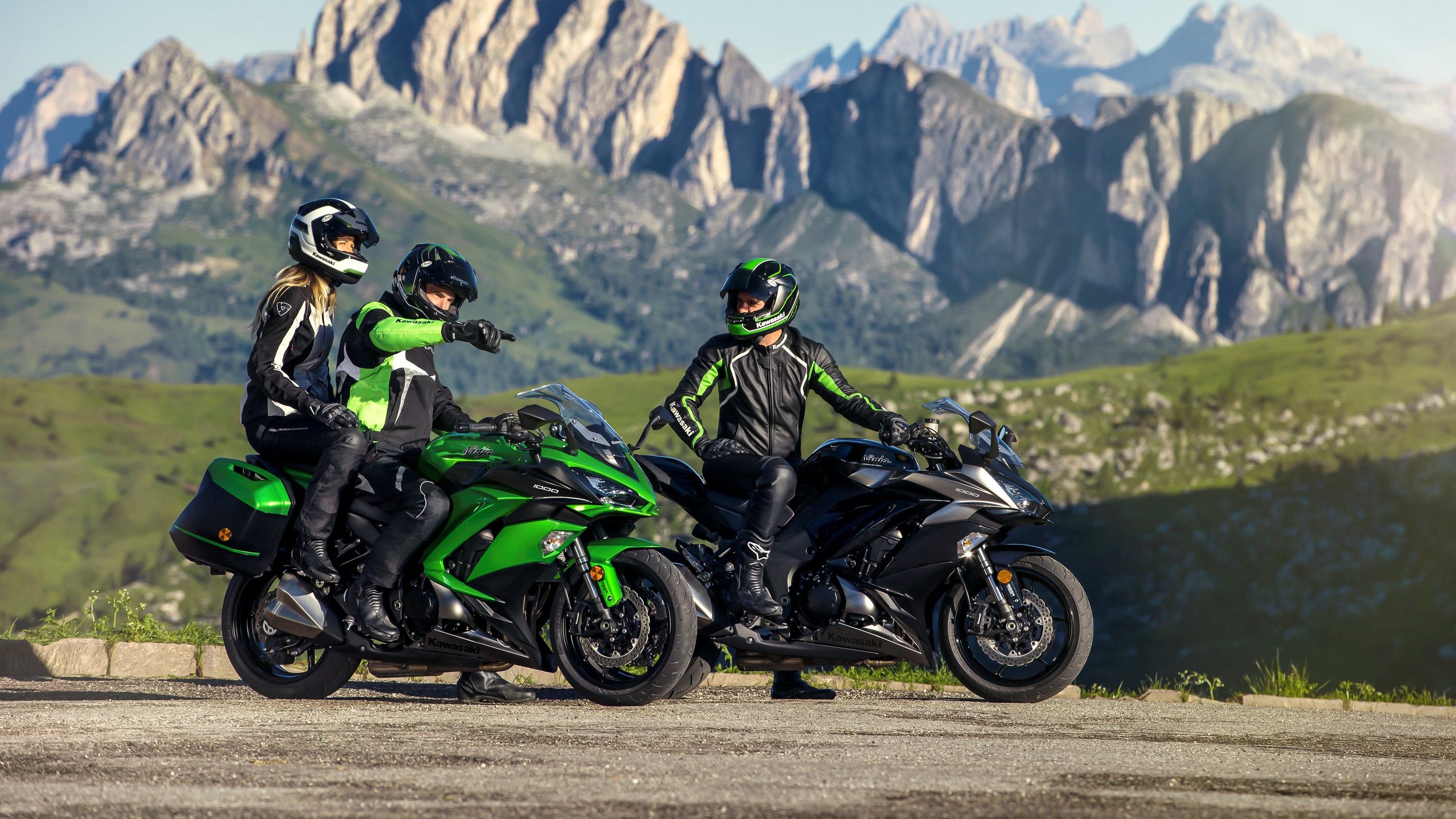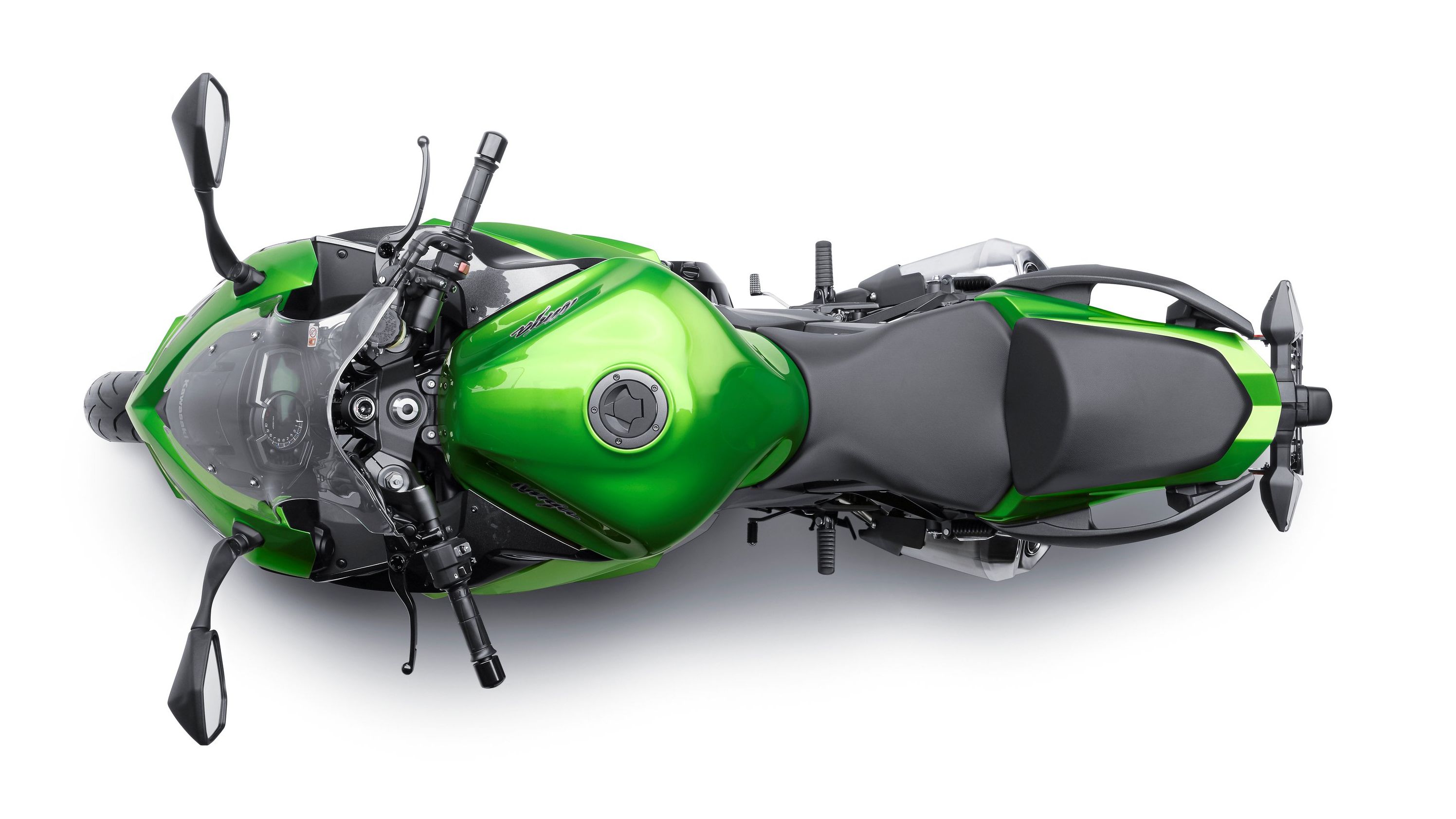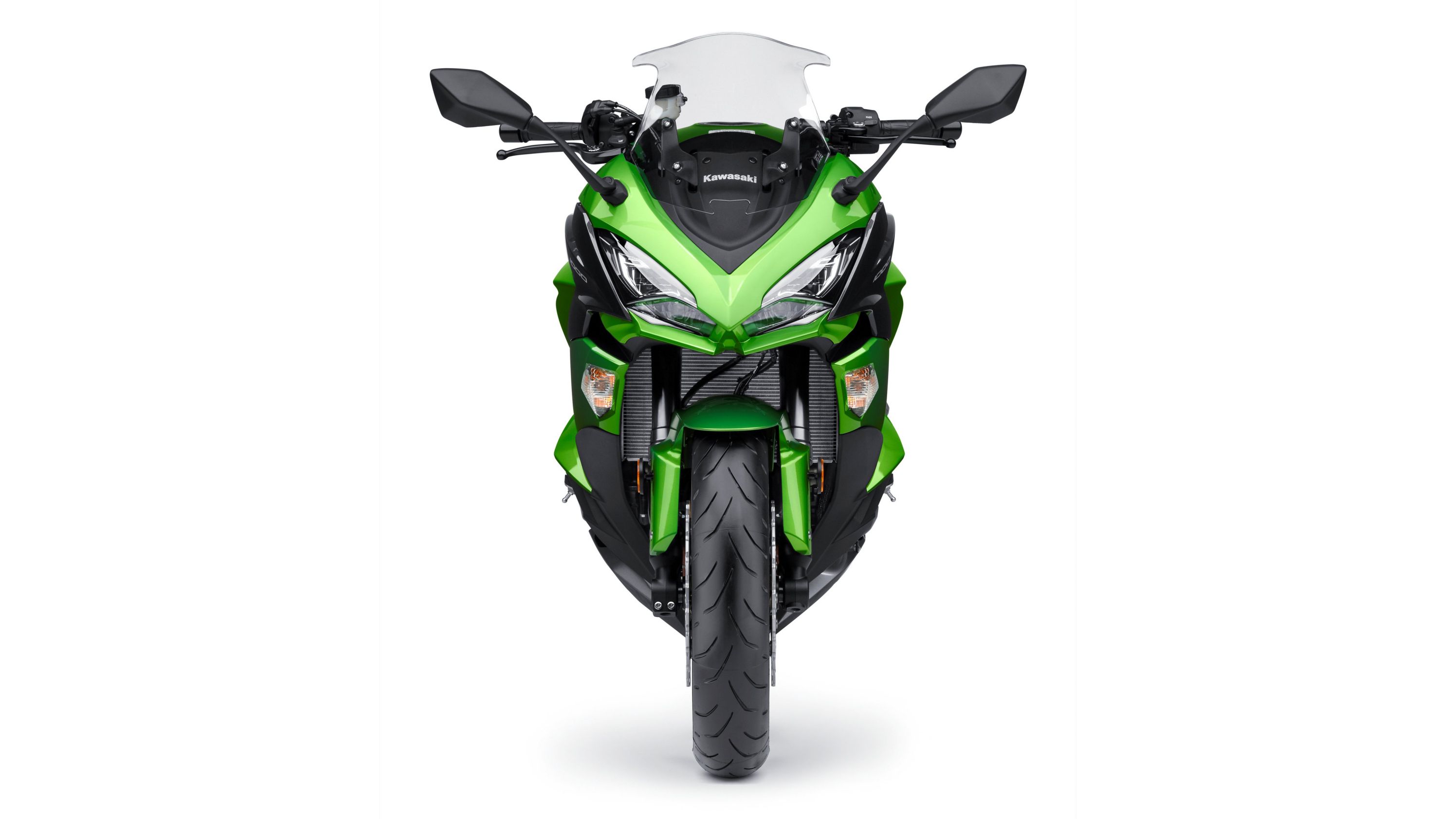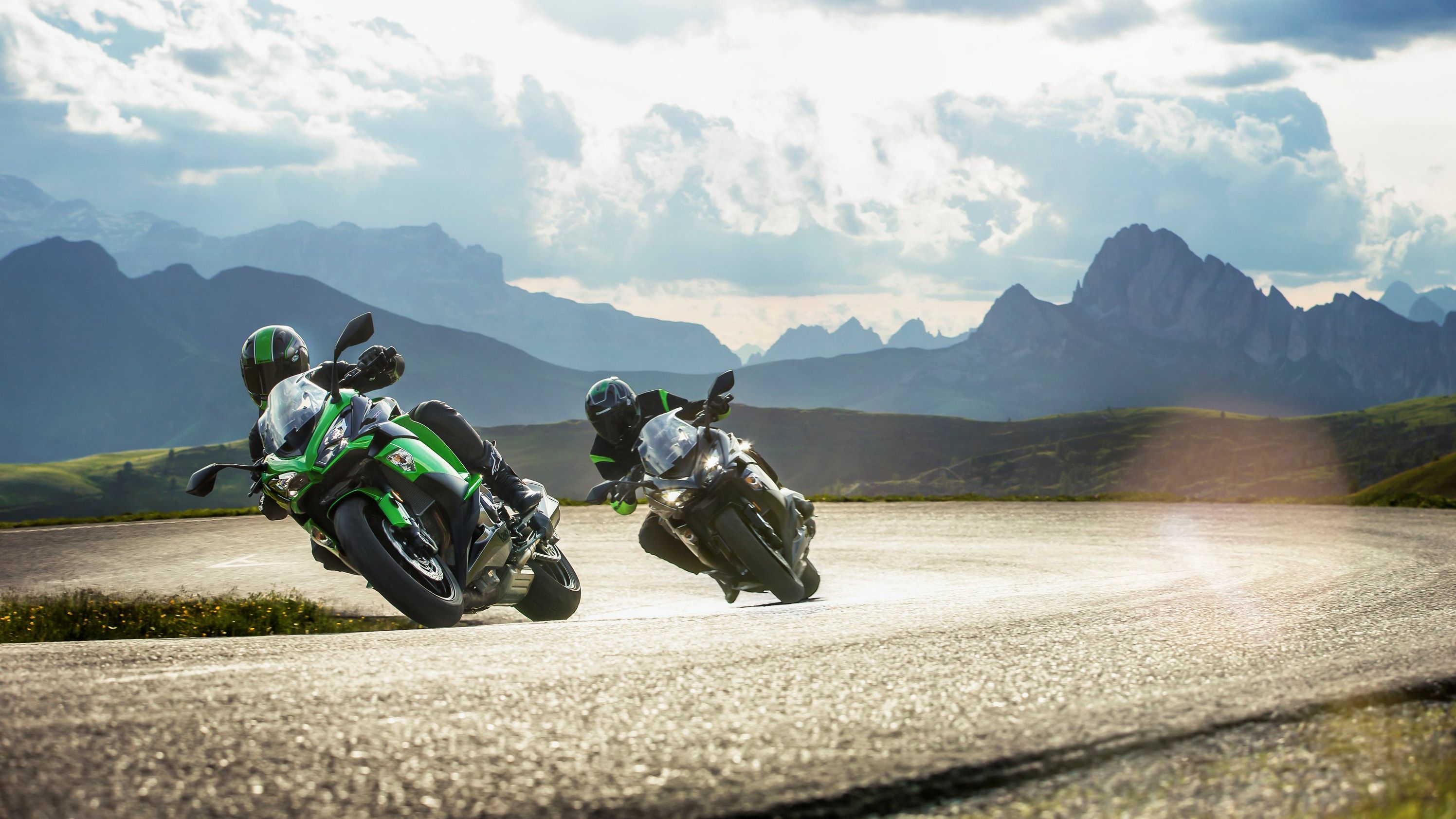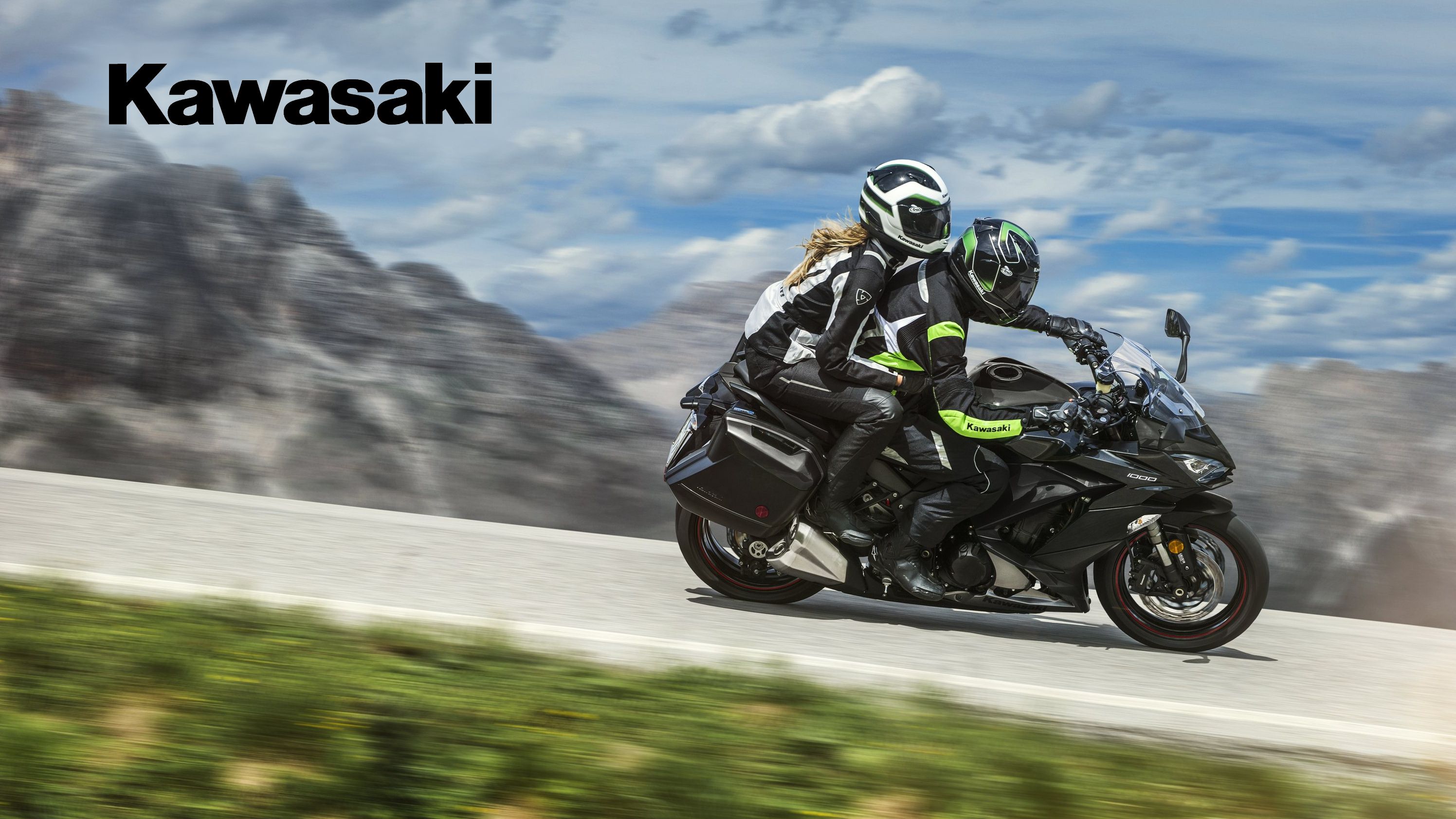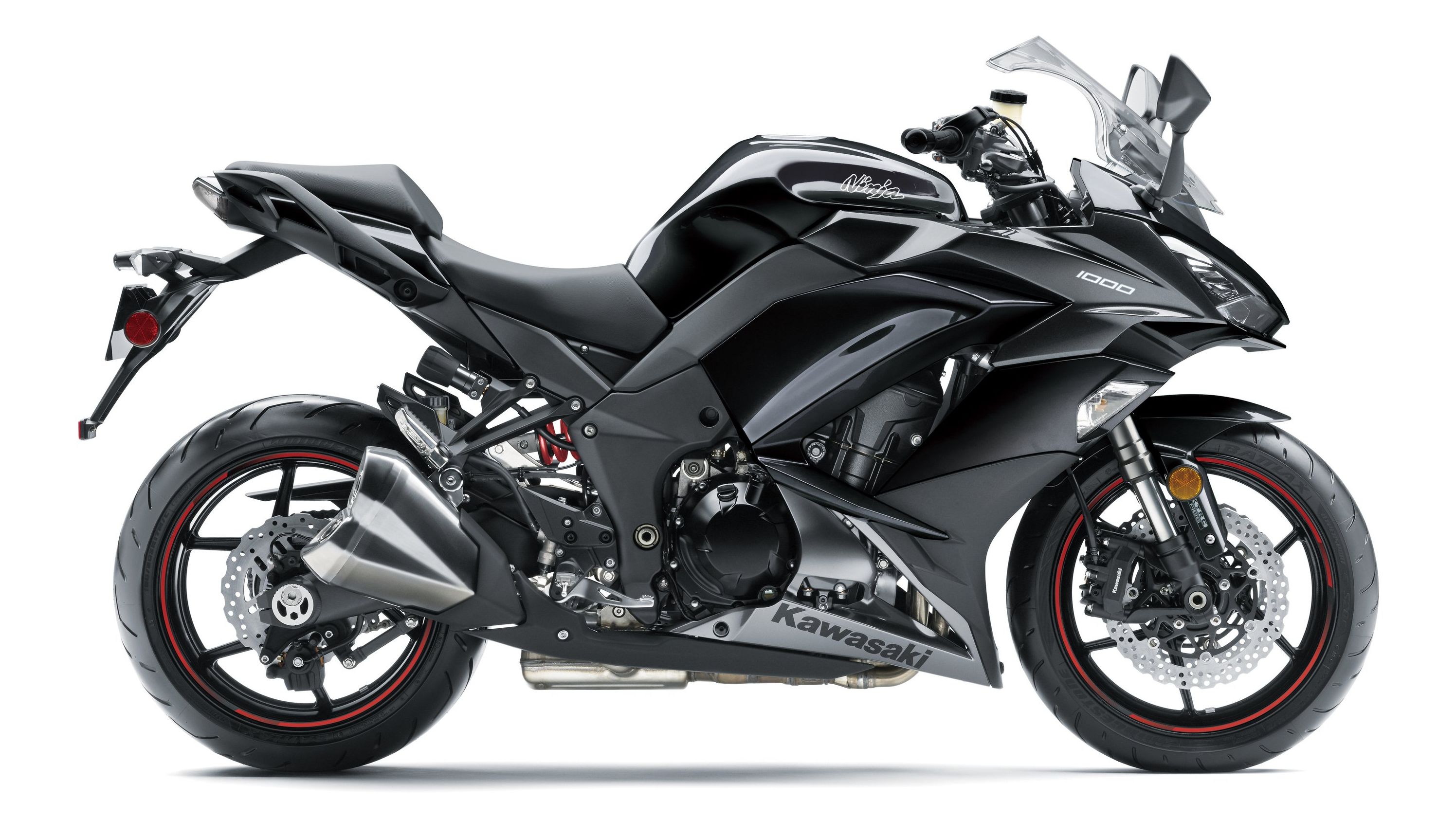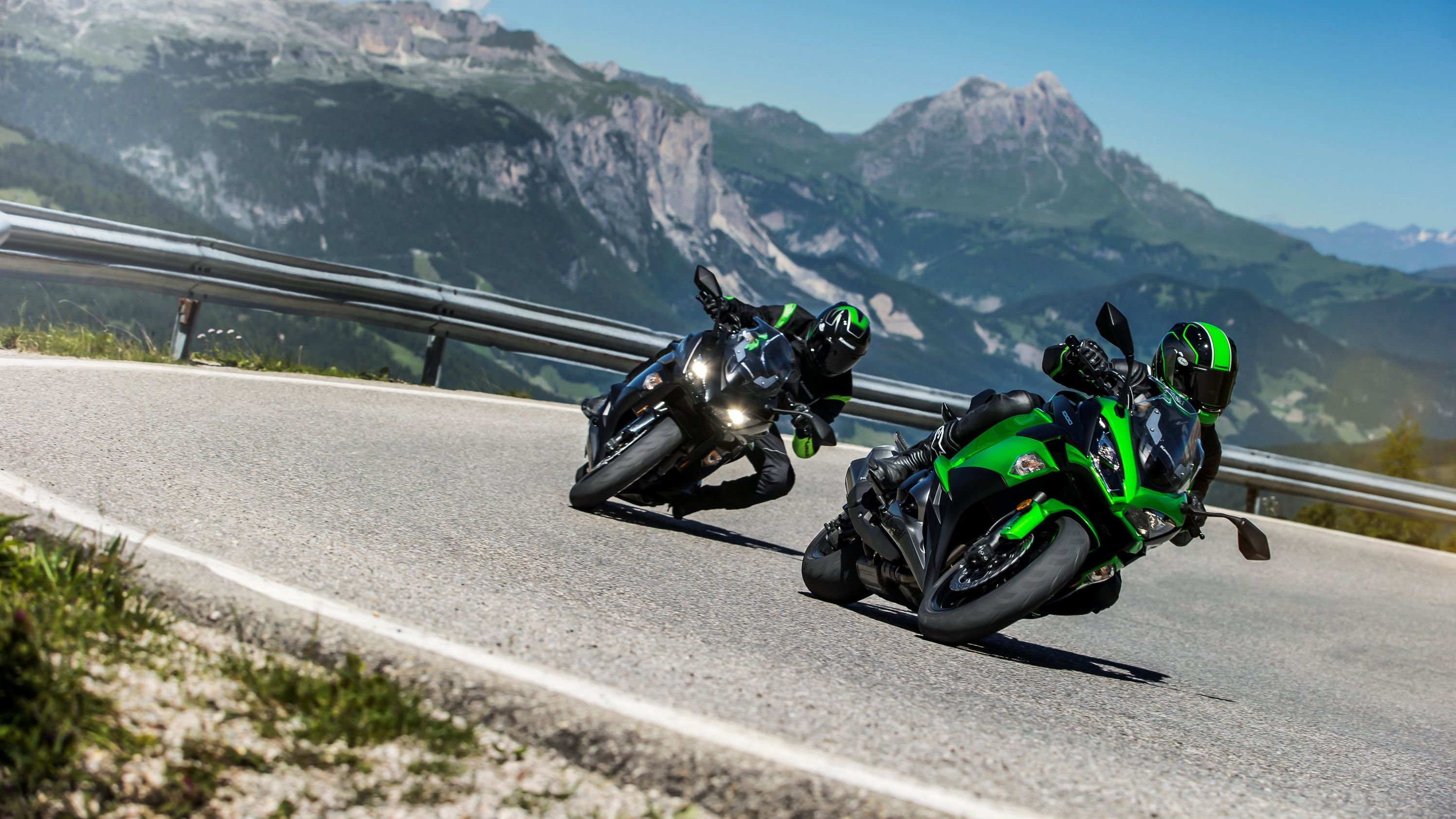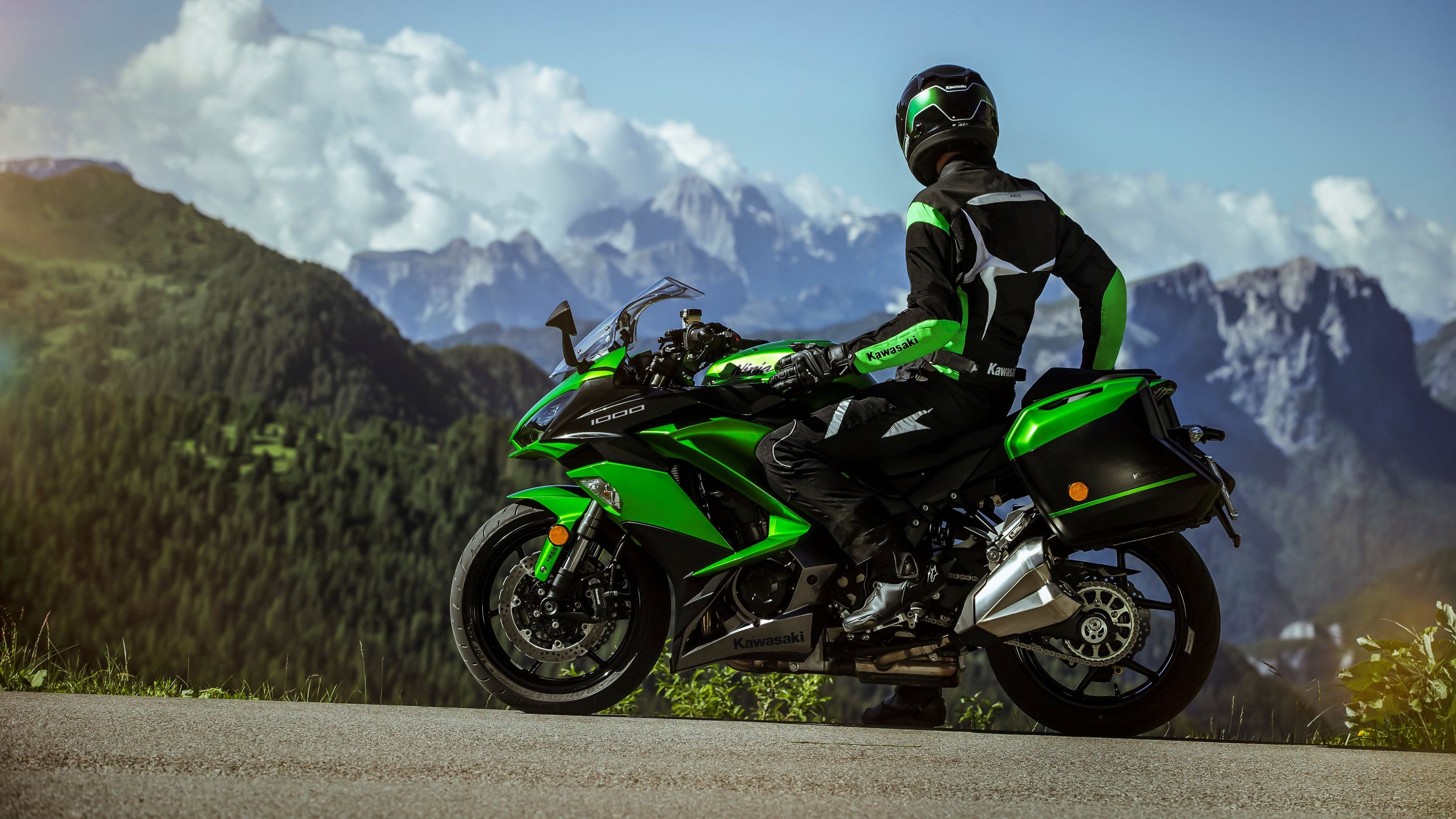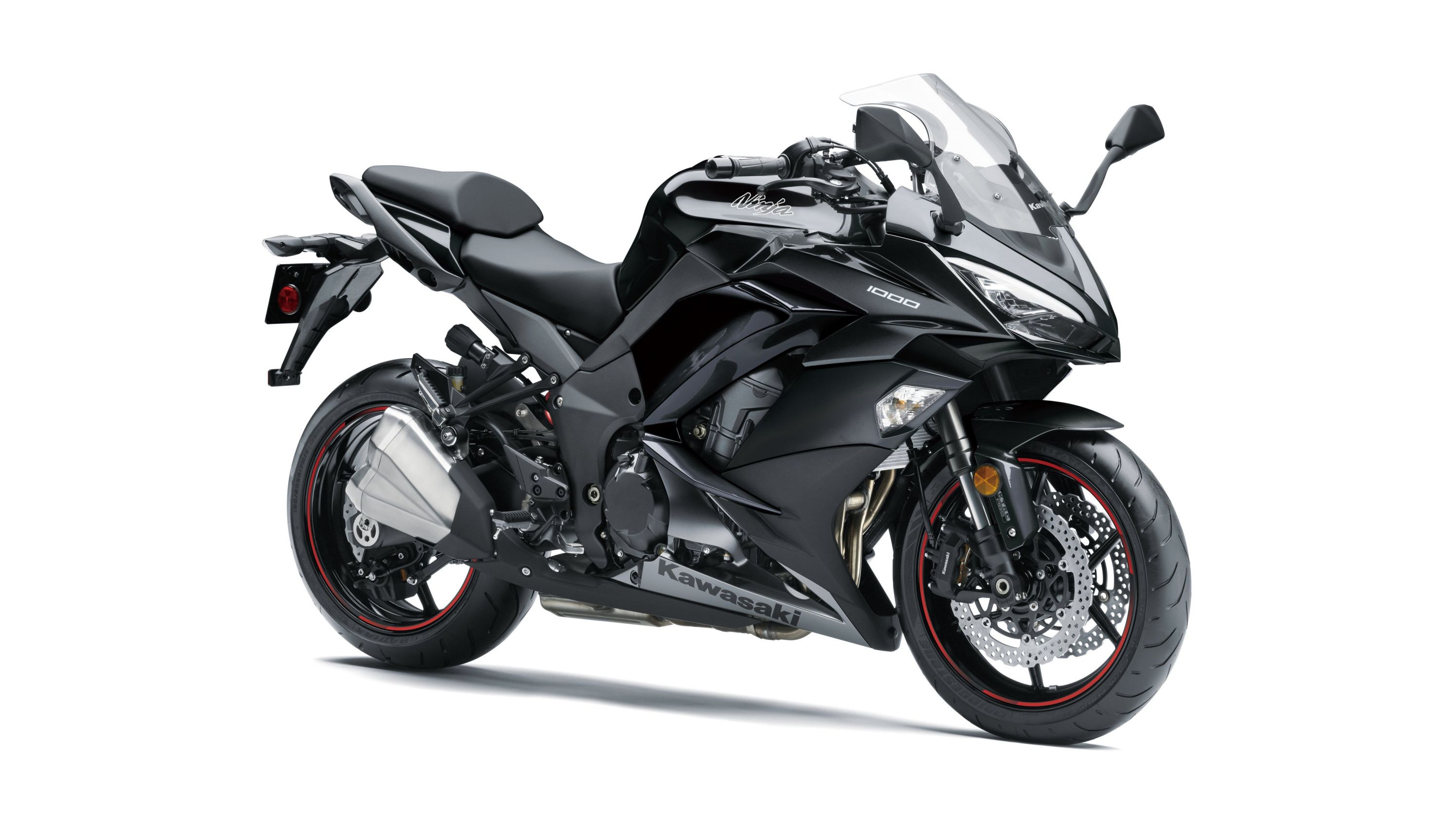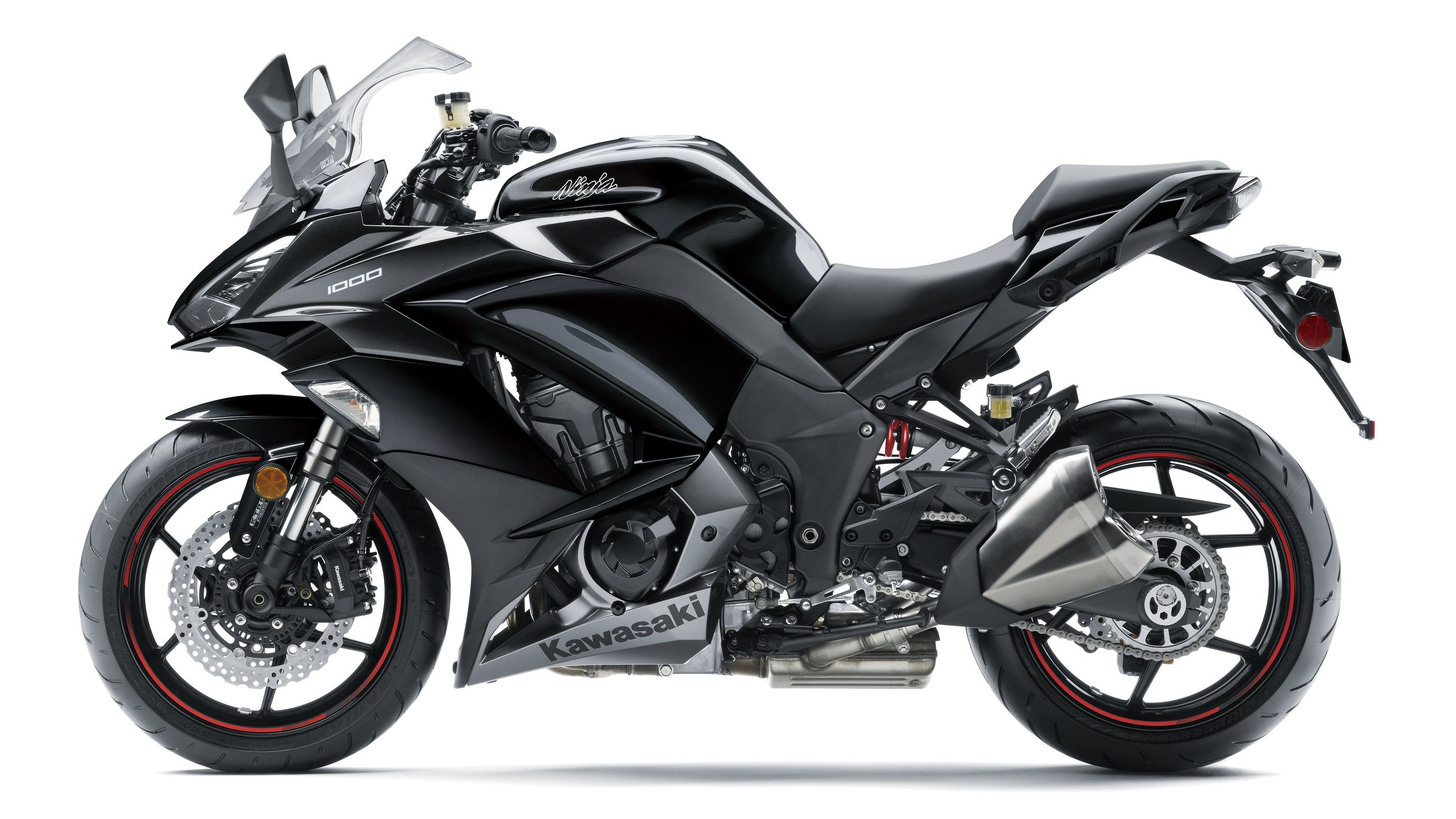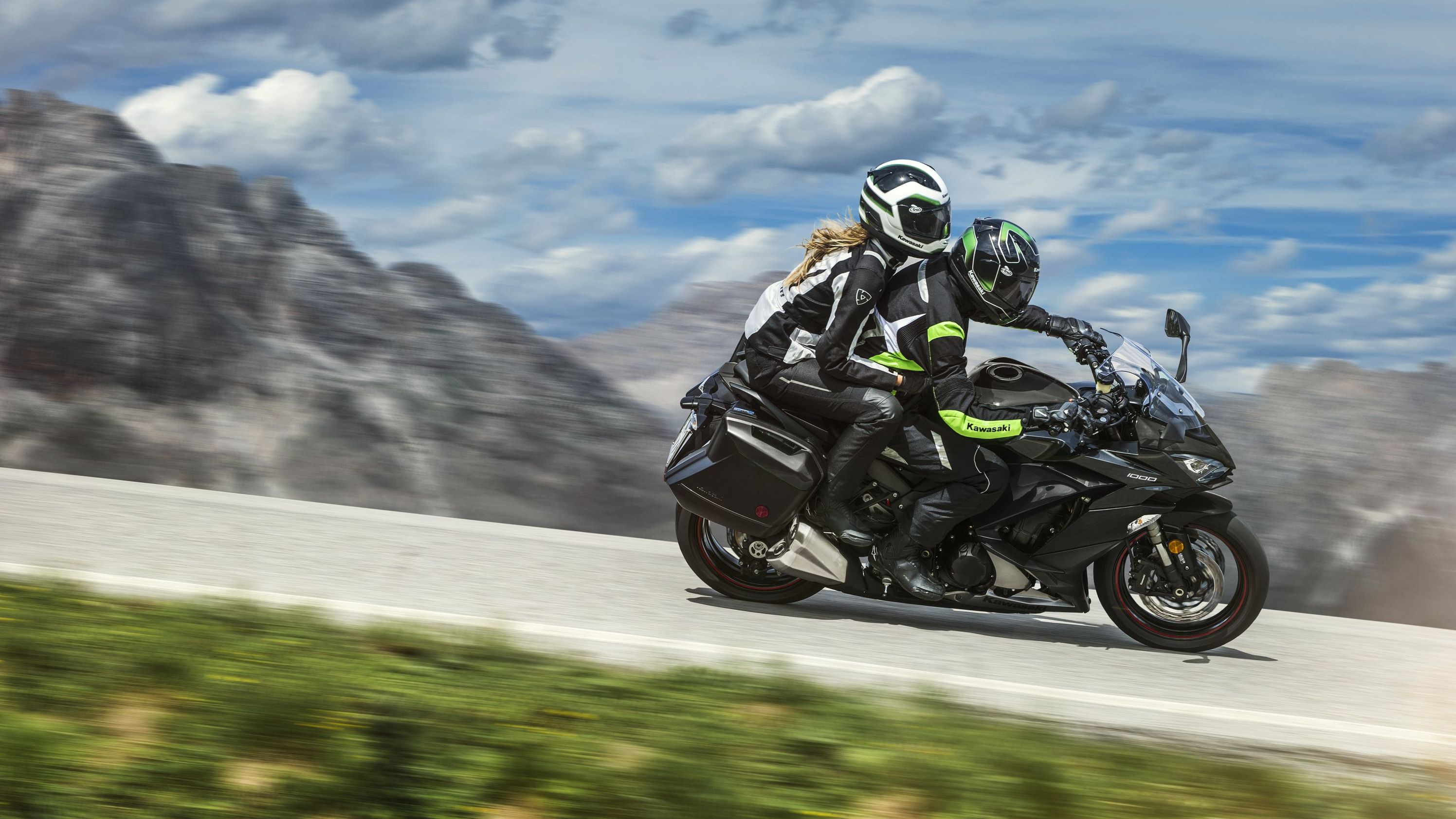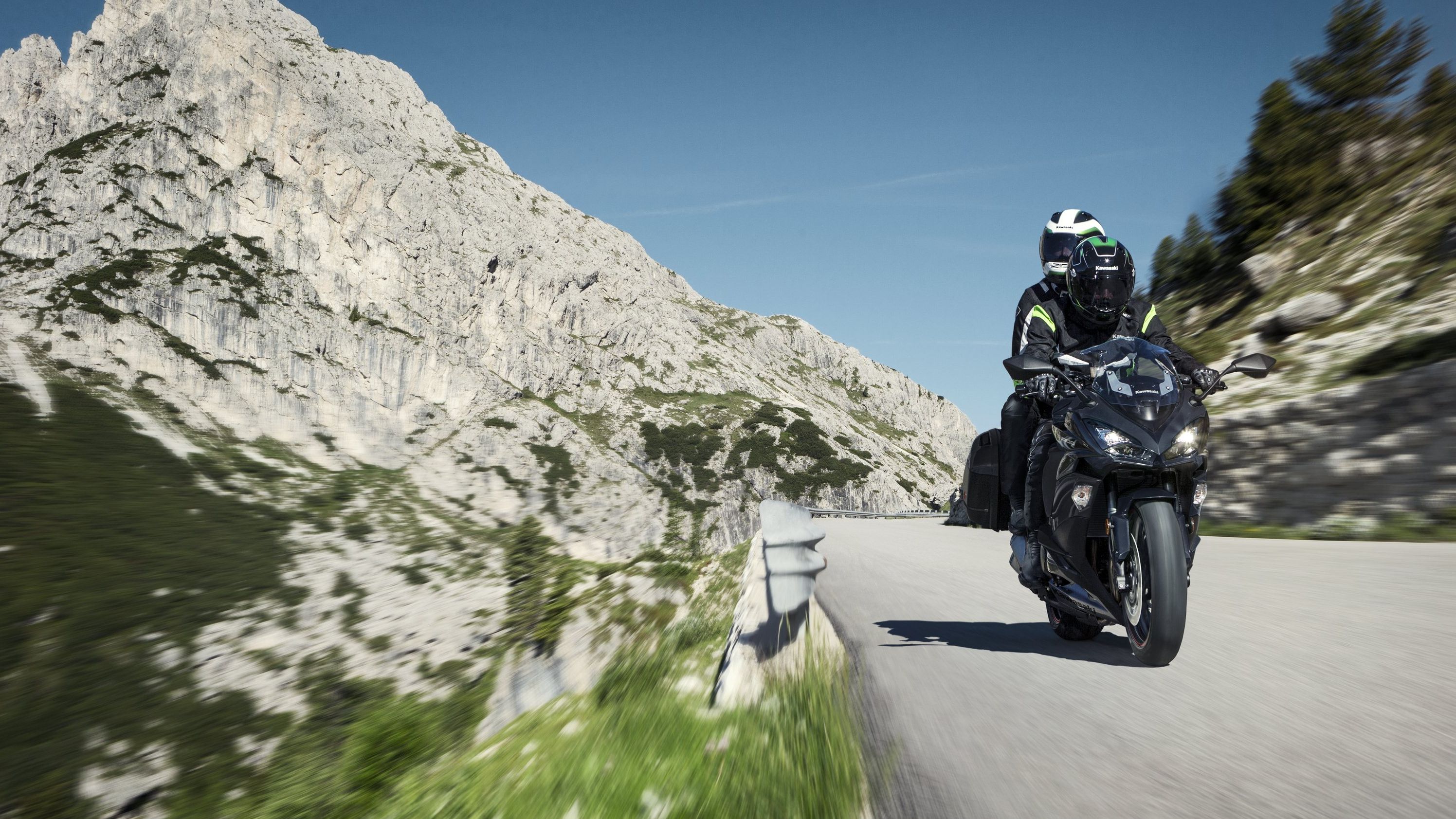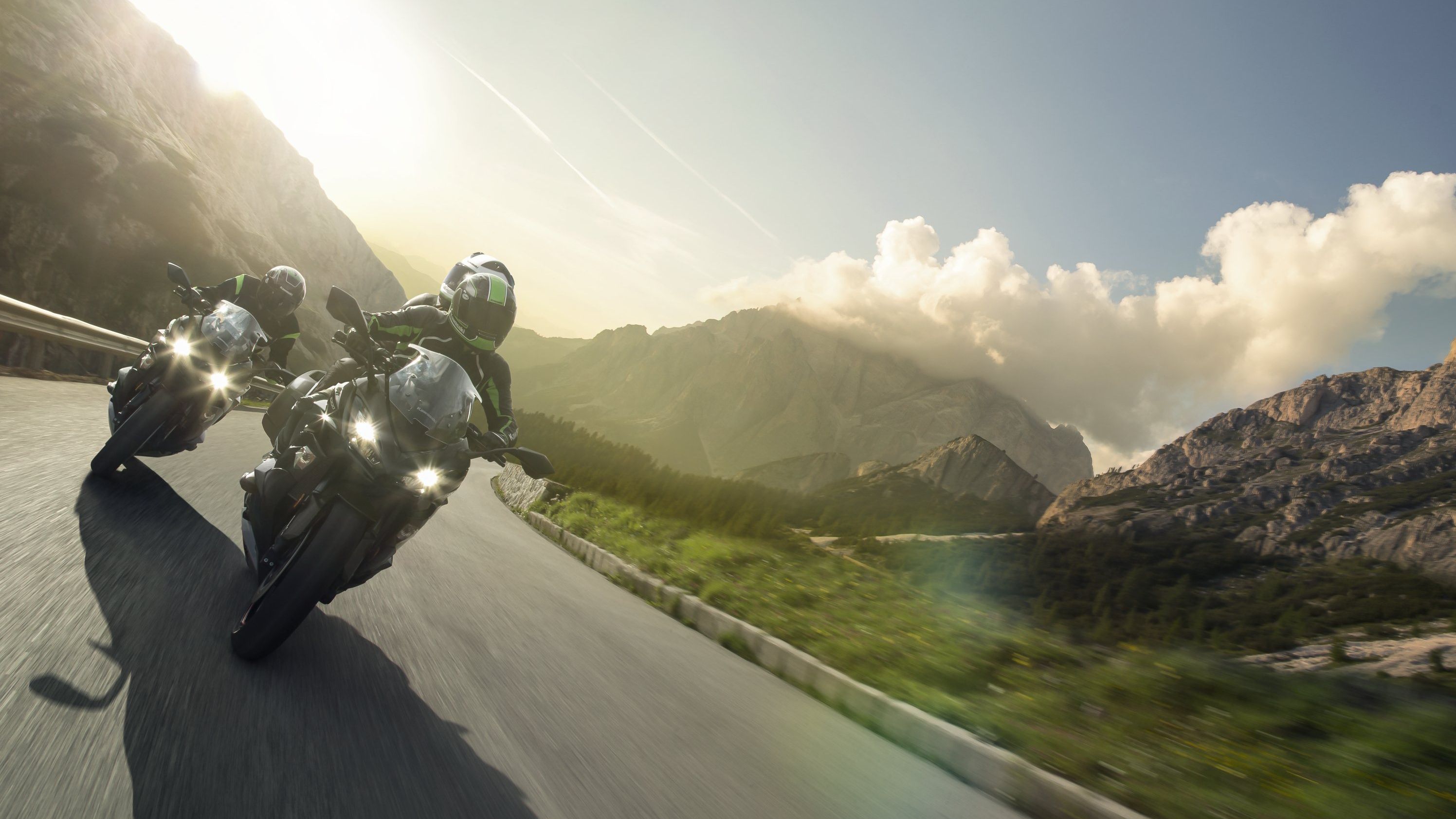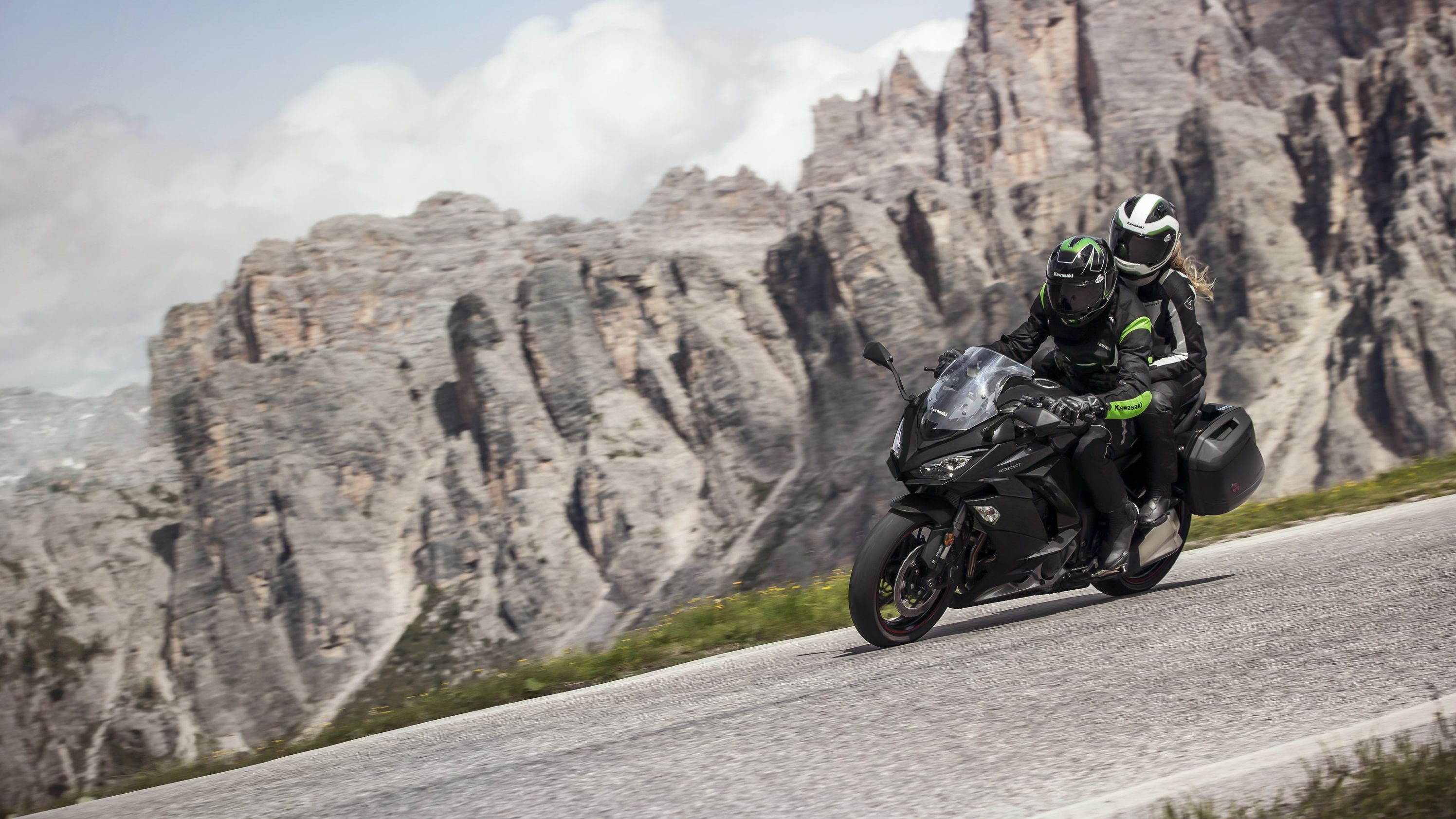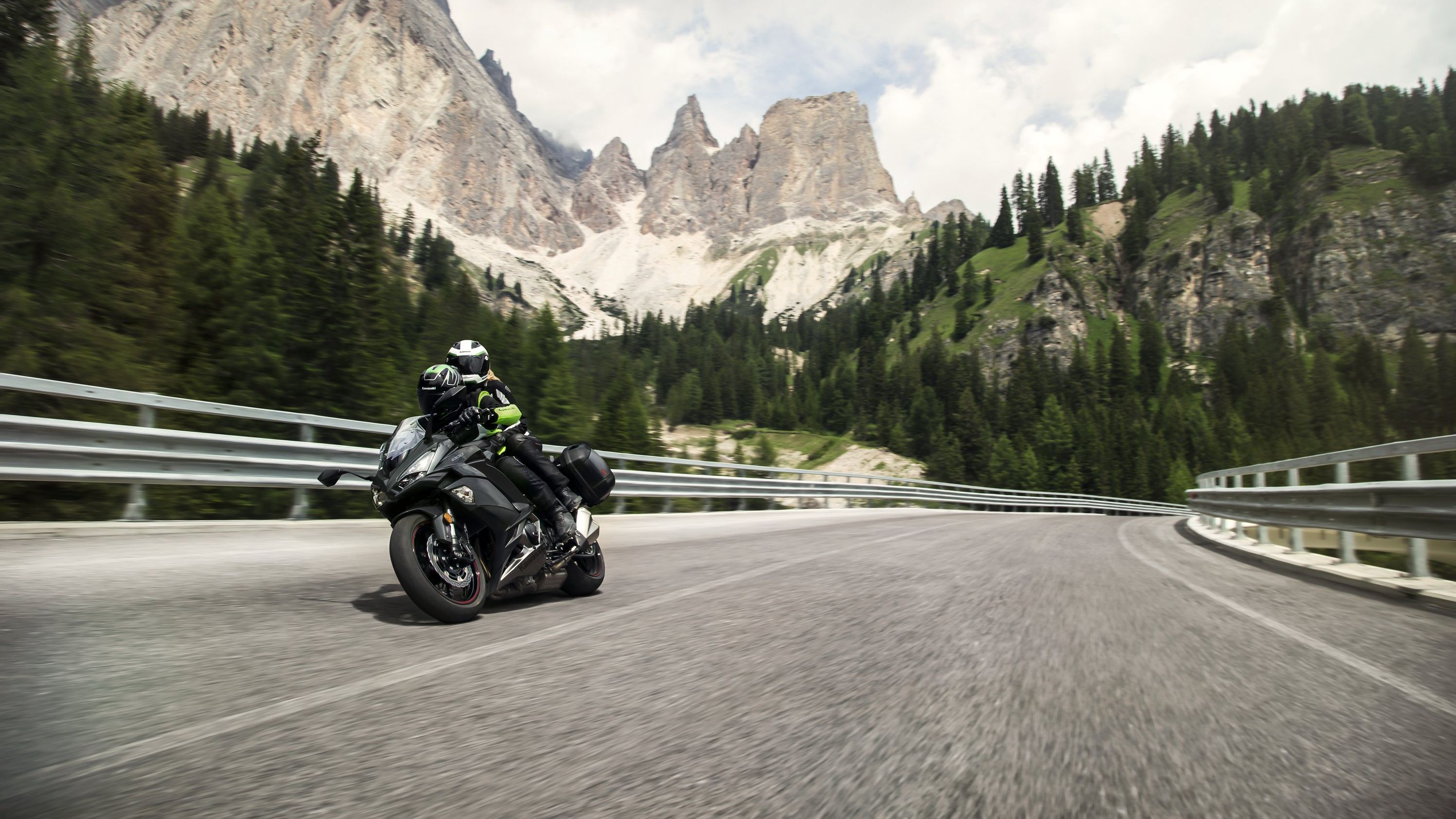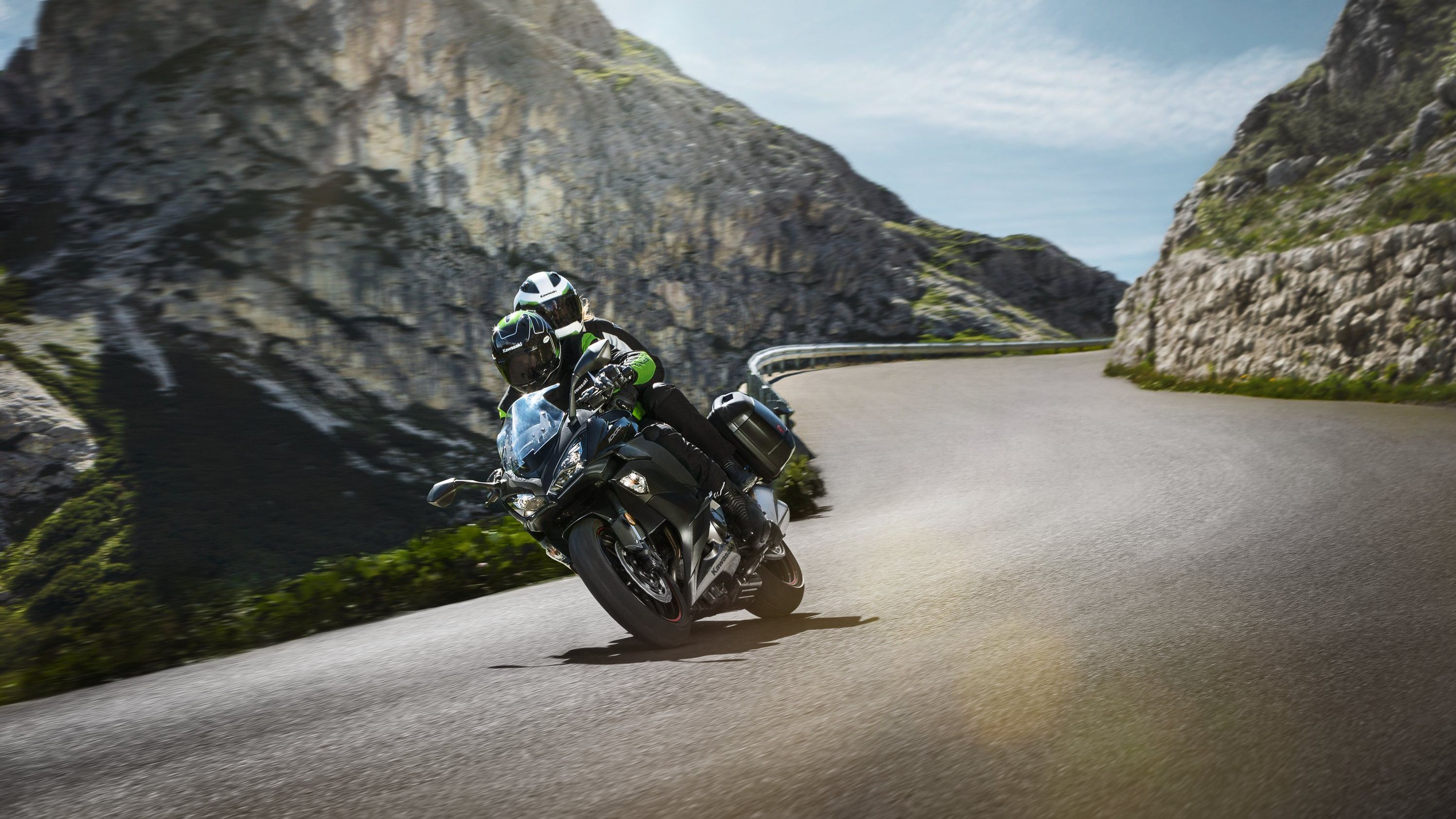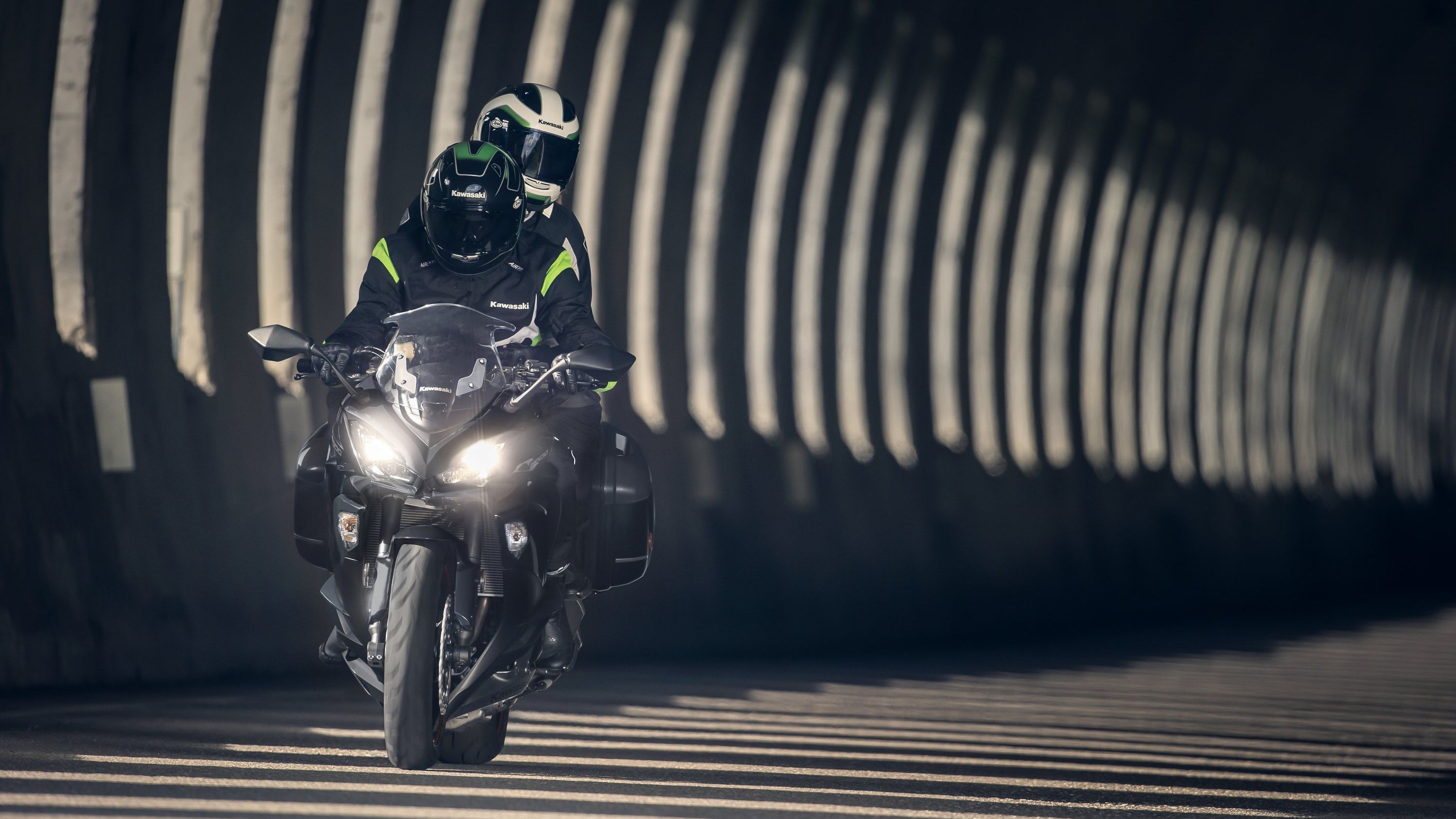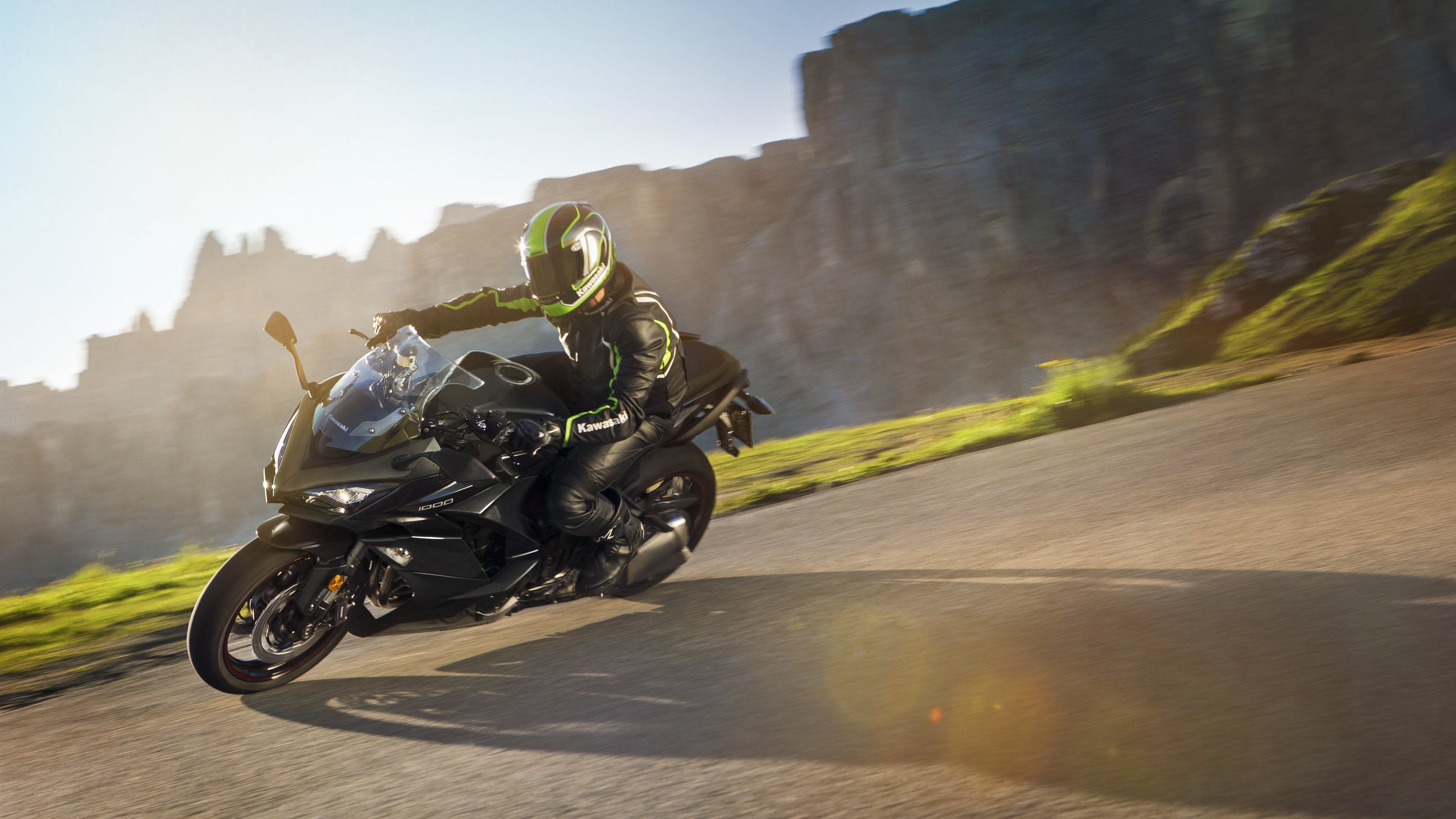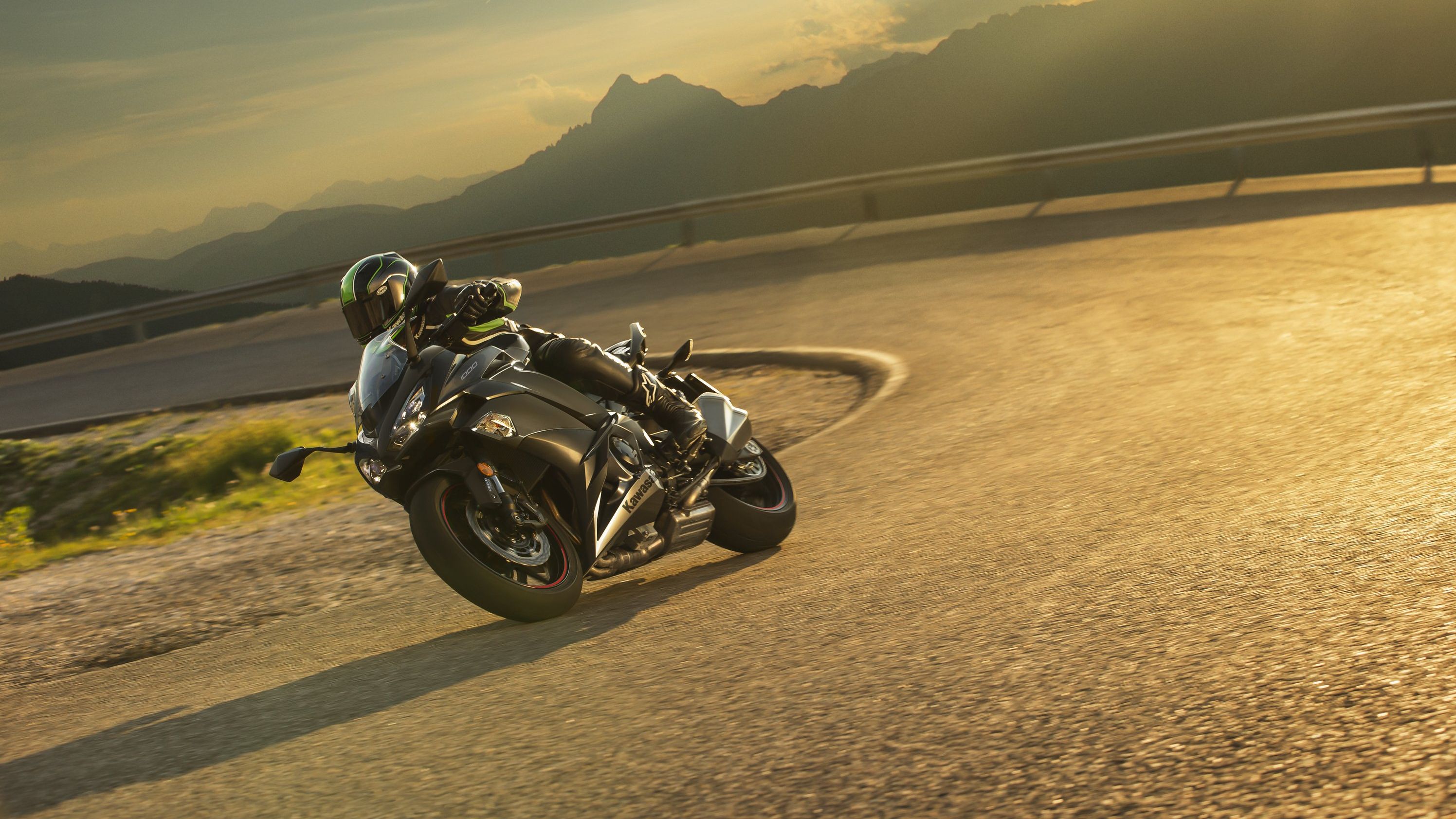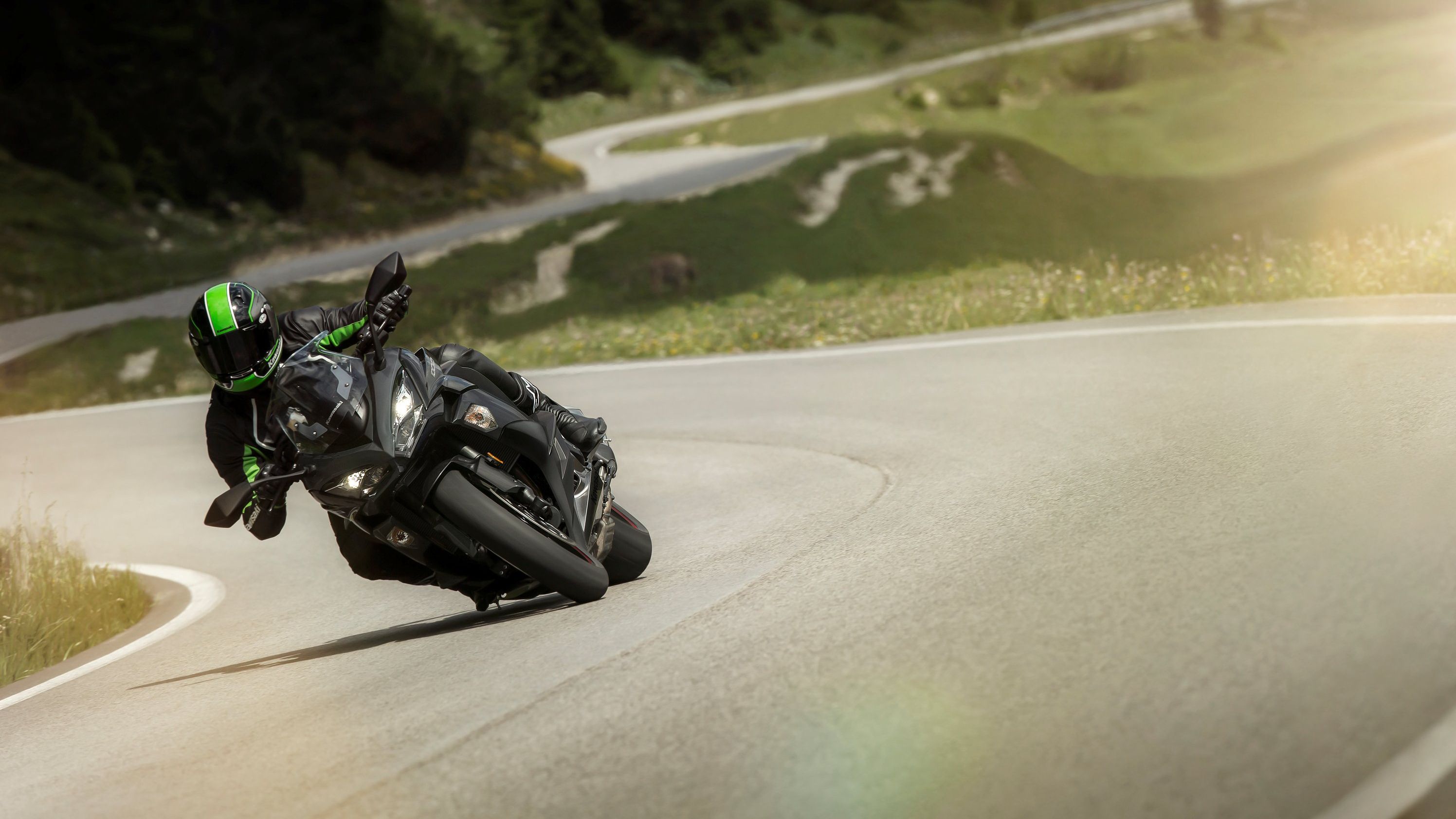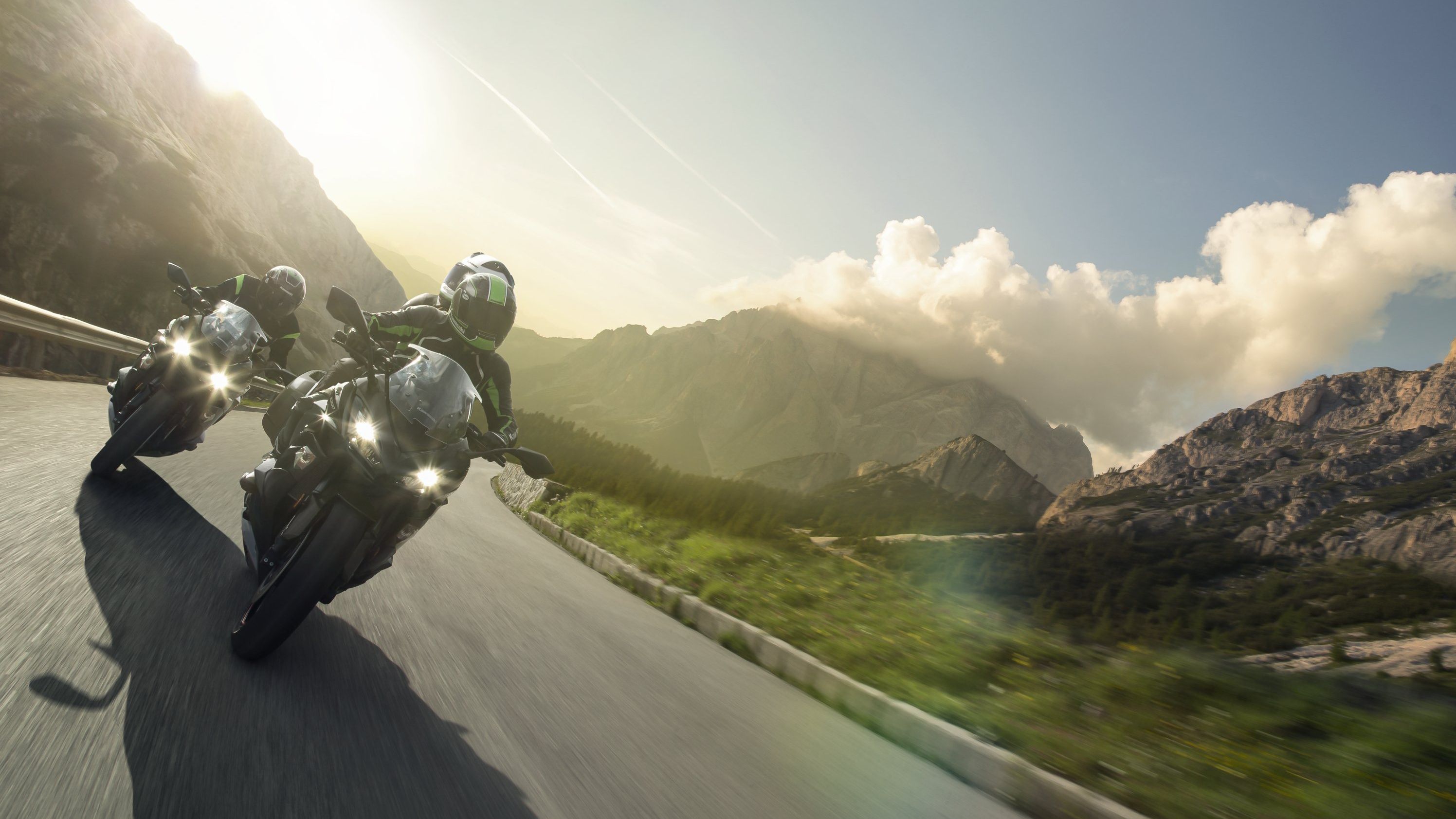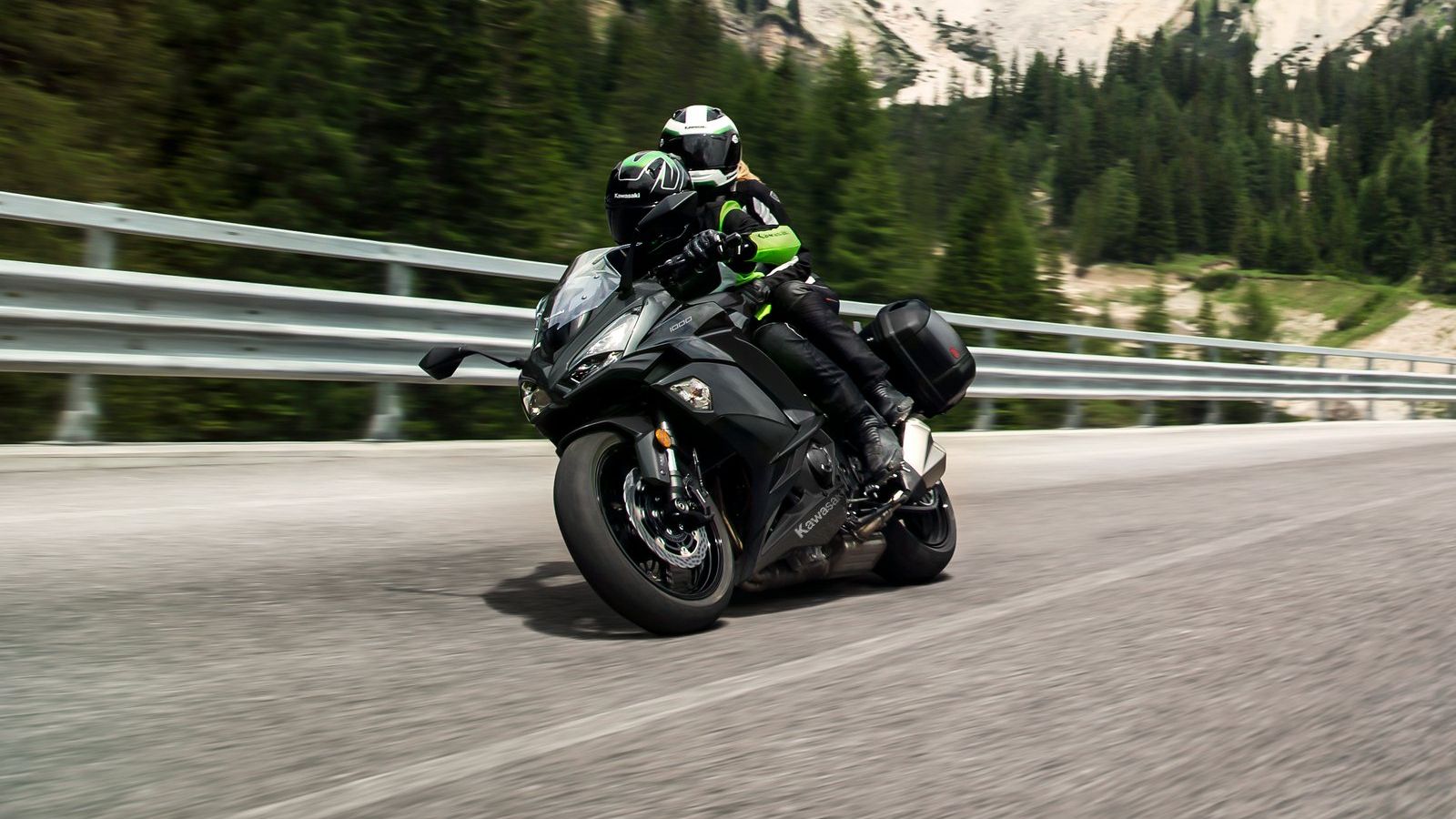The Ninja 1000 ABS was on the receiving end of an extensive rework in 2017 and carries it over straight into the 2019 model year. The electronics suite is indeed sweet with Bosch's Inertial Measurement Unit on board along with Kawasaki's Cornering Management Function, Traction Control and ABS. Long-distance capabilities were upgraded as well with better ergos, a lower saddle and a larger zone of protection due to the revamped fairing and windshield design. The delightfulness continues into the instrumentation with a new LCD screen display in an equally-new instrument panel. All this comes bundled with the proven 1,043 cc, 81.7 pound-foot engine to propel the Ninja 1000 into what Kawi hopes is a hybrid sport-touring niche that is a bit sportier than its tour-tastic Concours line, and more tour-capable than its other straight-up sportbikes and supersports.
2017 - 2019 Kawasaki Ninja 1000
- Make: Array
- Model: 2017 - 2019 Kawasaki Ninja 1000
- Engine/Motor: inline-4
- [do not use] Vehicle Model: Array
Kawasaki Ninja 1000 Design
The redesigned front fairing splits the wind with a wedge shape meant to throw the wind out and away from the rider. This creates a larger wind pocket than its size would suggest, though the fairings picked up 28 mm of width apiece this year. LED headlights come tucked under the brow with a deeper, wider and brighter illumination area than the 2016 model. An adjustable double-bubble windscreen extends the protection upwards to encompass the upper trunk and head without having to tuck all the way in, and not only is the windshield 15 mm taller, but it comes with a three-position adjuster that allows you to dial right in for your body type and preferences.
A pointed entry and chin spoiler brings the 1000 more into line with the rest of the Ninja-family's look for a balance between sportiness and rider comfort. Vents in the engine cowl help pull waste heat out of the engine compartment and direct it away from the rider's legs in a bid to further increase rider comfort. In that vein, the improvements continue at the rider's interface with a five-position clutch-lever adjustment that lets you dial in for hand size and at the saddle that comes both lower and wider to improve butt-endurance.
The redesigned instrument panel sports a large analog clock for the tach with a host of idiot lights on the left side and a digital LCD display to the right that covers speed, time, fuel range/consumption, to name a few. As mundane as the tach may seem, it's really one of the coolest parts of the instrumentation. The needle actually changes color as you move through the rev range with three different colors to match the upshift-indicator light for greater situational awareness with minimal eye movement and time spent looking at the display instead of the road. On top of that, the Economical Riding Indicator monitors fuel consumption and indicates when you find that sweet spot for your current gear.
The upper lines play along the blocky fuel-tank bump and deep-scoop seat with a sharp rise to the p-pad that comes braced by a set of oh shit! handles with flip-out footpegs to wrap up the passenger's goodies. Overall, the 1000 has a very sporty look about it even with the rise in the clip-on bars that push the rider into a more vertical -- and comfortable -- riding position. Still, even with all that, it's still much more sport than tour since you have to hit the accessories catalog before you find your first scrap of cargo-carrying capacity.
Kawasaki Ninja 1000 Chassis
A die-cast aluminum twin-spar frame and cast-aluminum subframe define the shape of the bike with the engine serving as a stressed member to complete the structure along with the welded-on steering head. Steering geometry comes set at the sportier-end of the stability scale with a 24.5-degree rake angle and 4 inches of trail. Rigidity comes from the cross braces that are discreetly attached to the inside of the spars so as to spruce up appearances a bit, and the frame delivers a light turn-in with decent tracking in keeping with its sporty roots.
A set of 41 mm inverted front forks come with the full spectrum of tweaks to include stepless damping for both strokes and a spring-preload adjuster. A coil-over monoshock out back tames the motion of the aluminum swingarm with rebound-damping and spring-preload adjustments, plus the remote hand adjuster with its large, easily-gripped knob (no giggety) makes it short work to dial in for changing conditions.
The brakes are serious business with radial-mount Tokico calipers to bite the wave-cut and perforated discs. Up front, a pair of four-bore calipers bite the dual, 300 mm discs with a single-pot anchor to grab the 250 mm disc out back. Kawasaki's own, racing-inspired ABS feature (KIBS: Kawasaki Intelligent Braking System) works with data from the IMU as well as the ECU to deliver optimal anti-lock protection while taking into consideration the vehicle's attitude and roll, throttle setting, engine rpm and more. It even combats rear-end lift and compensates for backtorque when braking during downshifts. Pretty sporty stuff for a potential tourer, but hey, I reckon some folks like to get where they're going faster than others.
|
Frame Type: |
Aluminum backbone |
|
Rake / Trail: |
24.5°/4.0 in |
|
Front Suspension / Wheel Travel: |
41 mm inverted cartridge fork with stepless compression and rebound damping, adjustable spring preload/4.7 in |
|
Rear Suspension / Wheel Travel: |
Horizontal monoshock with stepless rebound damping, remotely adjustable spring preload/5.7 in |
|
Front Tire: |
120/70 ZR17 |
|
Rear Tire: |
190/50 ZR17 |
|
Front Brakes: |
Dual 300 mm petal-type rotors with radial-mount 4-piston monobloc calipers and ABS |
|
Rear Brakes: |
Single 250 mm petal-type rotor with single-piston caliper and ABS |
Kawasaki Ninja 1000 Drivetrain
The beating heart is an inline-four that sports even more fandanglery. The Kawasaki Traction Control monitors wheel speeds and modifies its levels of intervention based on info from the IMU concerning chassis orientation and acceleration rates. Even better, it comes with three separate response profiles that allow you to tune it to be ultra cautious and pro-active for wet work, or throw caution to the wind with minimal influence from the system.
To sweeten the deal, Kawi follows up with two Power Modes that let you flip between full power and a reduced-power mode. The reduced mode delivers something around 70-percent of max with a more civilized throttle response for yet another layer of safety in conditions with less-than-desireable traction. The final touch is the Kawasaki Cornering Management Function that monitors the bike's parameters in the corners and modulates the KIBS and throttle control accordingly to provide seamless transitions from entry to exit.
Bore and stroke measure out at 77 mm and 56 mm respectively for a 1,043 cc displacement with a warmish 11.8-to-1 compression ratio. Water-cooling deals with the waste heat while mitigating engine noise while no doubt helping the mill meet emissions standards. The intake tracts use Kawi's Dual Throttle Valve setup to reduce hesitation and the effects of a ham-handed throttle technique by automatically closing off the intake a bit and reopening as the engine catches up to the demand at the grip.
A quartet of 38 mm Keihin throttle bodies feed the beast with digital fuel injection to meter the fossil juice. Power numbers point to a ride that can still turn in a thrilling performance with a claimed 81.7 pound-feet of torque and something in the neighborhood of 138 horsepower, depending on whose dyno you consult.
|
Engine: |
4-stroke, 4-cylinder, DOHC, 16-valve, liquid-cooled |
|
Displacement: |
1,043 cc |
|
Bore x Stroke: |
77.0 mm x 56.0mm |
|
Compression ratio: |
11.8:1 |
|
Fuel System: |
DFI® with 38 mm Keihin throttle bodies (4) and oval sub-throttles |
|
Ignition: |
TCBI with digital advance |
|
Transmission: |
6-speed, return shift |
Kawasaki Ninja 1000 Pricing
The MY19 Ninja 1000 ABS rolls for $12,199, which is a straight-up carry-over from last year. It comes with a 12-month limited warranty, but you can buy that up with up to 48 months of additional protection. For 2019, the Ninja 100 comes in two-tone Metallic Spark Black/Metallic Matte Carbon Gray. Wow. Gray and black. What a surprise.
|
Warranty: |
12 Month Limited Warranty (optional Kawasaki Protection Plus™ 12, 24, 36 or 48 months |
|
Colors: |
|
|
└ 2017: |
Metallic Spark Black/Metallic Graphite Gray, Candy Lime Green/Metallic Carbon Gray |
|
└ 2018: |
Metallic Spark Black/Metallic Graphite Gray, Metallic Matte Fusion Silver/Metallic Flat Spark Black |
|
└ 2019: |
Metallic Spark Black/Metallic Matte Carbon Gray |
|
Price: |
$12,199 |
Kawasaki Ninja 1000 Competitors
It wasn't hard to pick a competitor for this one; the GSX-S1000F ABS from Suzuki jumps to mind immediately and it seems to be a natural fit. Right off the bat, the similarities start in a blunt yet still-pointy nose and while the GSX-S also sports a narrow smoked windshield, it seems that it comes fixed in position. Short-rise bars push the rider back just a bit into a more relaxed riding position on both rides for roughly equal utility as a long-distance platform.
Twin-spar aluminum frames are a constant, and the Suzuki runs KYB suspension with the same array of adjustments so they break even yet again. Brembo anchors slow the GSX-S with ABS protection, but Suzuki's system lacks the sophistication of the KIBS for a definite advantage to Kawi here.
Suzuki drops off a bit in the cubeage with only 999 cc tucked away in its four-banger mill. It manages to work in a traction-control system and dual throttle valve feature, but again lacks some of the sophistication and gadgetry packed onto the Ninja, even though the actual power numbers are close with 137.8 horsepower and 74 pound-feet of torque. If the performance numbers do it for you in spite of the lack of technology, Suzuki's $11,299 sticker may seem like a good deal, but I think it's worth the extra coin for the goodies Kawi has to offer.
He Said
“I like the look and love the tech, but question why they don't just go ahead and throw the luggage on there. It is billed as a touring sport, if not an actual sport-tourer, after all. Plus, I wonder if they ultimately are taking wind out of their own sails by redirecting Concours prospects. Whatever the case, this Ninja seems to have a lot going for it no matter how you plan to use it.”
She Said
My wife and fellow motorcycle writer, Allyn Hinton, says, "The seating position is very neutral and just takes a little repositioning to tuck in to a sport-riding position. The electronics are very nice and rather sophisticated for the price. One thing worth mentioning, I think, is the bag system. Prior to '17, if you went to the accessories catalog for bags, you had to buy a kit that required cutting panels to install so you could mount the bags. That isn't necessary now. The bike comes with an integrated bag-mounting system so it's no longer painful to throw some bags on; and let's face it, if you're looking at this as a sport-tourer, you want bags. A lever makes it easy to pop the bags off to carry inside with you. The saddlebag set will run about $900. They're roomy, too; not little glovebox-sized bags like on some sport-tourers."
Kawasaki Ninja 1000 Specifications
|
Engine & Drivetrain: |
|
|
Engine: |
4-stroke, 4-cylinder, DOHC, 16-valve, liquid-cooled |
|
Displacement: |
1,043 cc |
|
Bore x Stroke: |
77.0 mm x 56.0 mm |
|
Compression ratio: |
11.8:1 |
|
Fuel System: |
DFI® with 38 mm Keihin throttle bodies (4) and oval sub-throttles |
|
Ignition: |
TCBI with digital advance |
|
Transmission: |
6-speed, return shift |
|
Final Drive: |
Sealed Chain |
|
Electronic Rider Aids: |
Kawasaki Traction Control (KTRC), Kawasaki Intelligent anti-lock Brake System (KIBS), Power Mode, Kawasaki Corner Management Function (KCMF) |
|
Chassis: |
|
|
Frame Type: |
Aluminum backbone |
|
Rake / Trail: |
24.5°/4.0 in |
|
Front Suspension / Wheel Travel: |
41 mm inverted cartridge fork with stepless compression and rebound damping, adjustable spring preload/4.7 in |
|
Rear Suspension / Wheel Travel: |
Horizontal monoshock with stepless rebound damping, remotely adjustable spring preload/5.7 in |
|
Front Tire: |
120/70 ZR17 |
|
Rear Tire: |
190/50 ZR17 |
|
Front Brakes: |
Dual 300 mm petal-type rotors with radial-mount 4-piston monobloc calipers and ABS |
|
Rear Brakes: |
Single 250 mm petal-type rotor with single-piston caliper and ABS |
|
Dimensions & Capacities: |
|
|
Overall Length: |
82.7 in |
|
Overall Width: |
31.1 in |
|
Overall Height: |
46.7 / 48.6 in |
|
Ground Clearance: |
5.1 in |
|
Seat Height: |
32.1 in |
|
Curb Weight: |
516.0 lb |
|
Fuel Capacity: |
5.0 gal |
|
Wheelbase: |
56.7 in |
|
Details: |
|
|
Warranty: |
12 Month Limited Warranty (optional Kawasaki Protection Plus™ 12, 24, 36 or 48 months |
|
Colors: |
|
|
└ 2017: |
Metallic Spark Black/Metallic Graphite Gray, Candy Lime Green/Metallic Carbon Gray |
|
└ 2018: |
Metallic Spark Black/Metallic Graphite Gray, Metallic Matte Fusion Silver/Metallic Flat Spark Black |
|
└ 2019: |
Metallic Spark Black/Metallic Matte Carbon Gray |
|
Price: |
$12,199 |
Further Reading
Suzuki GSX-S1000
See our review of the Suzuki GSX-S1000.
Kawasaki Concours 14
Read our review of the Kawasaki Concours 14.
Kawasaki
Read more Kawasaki news.


